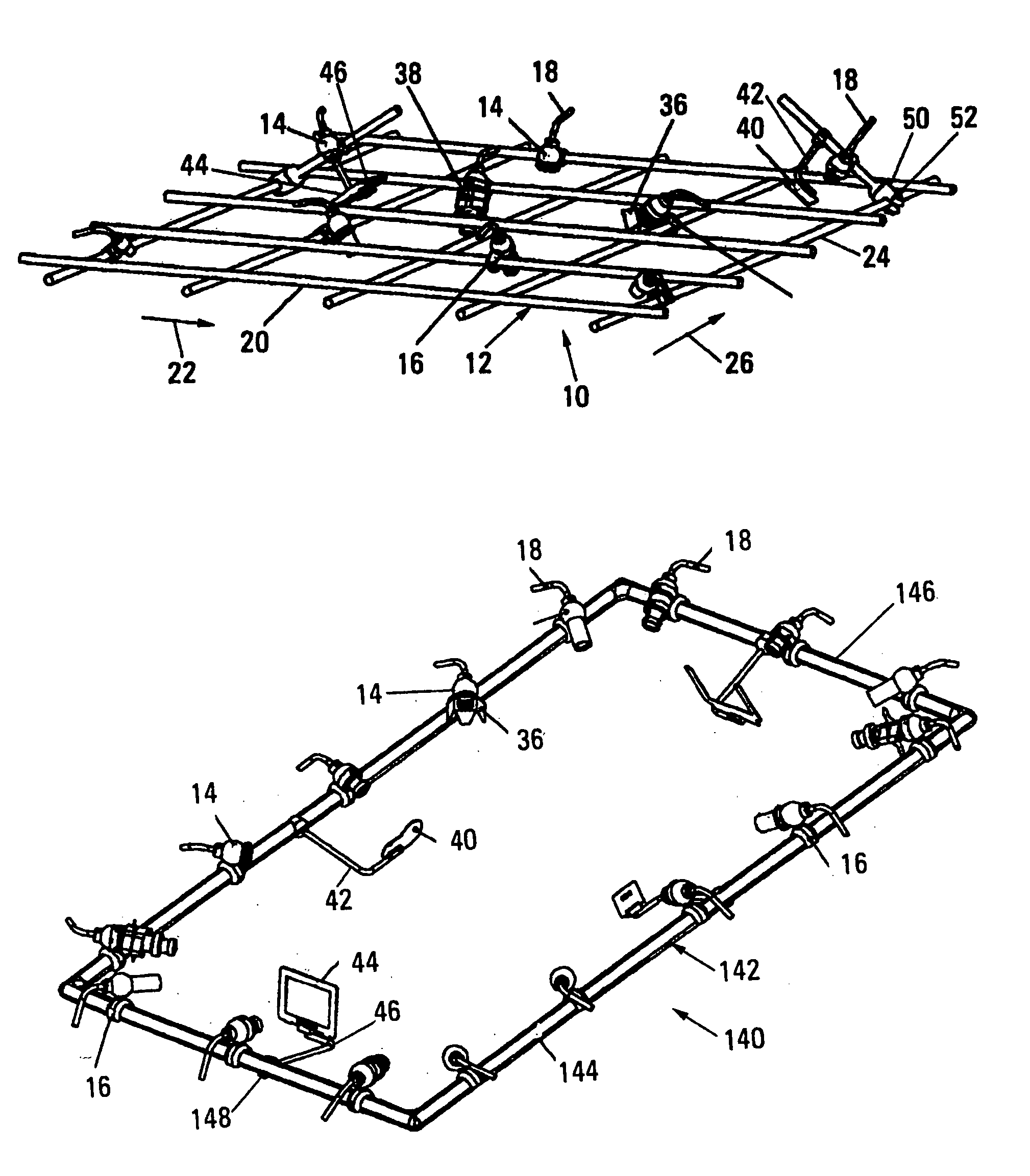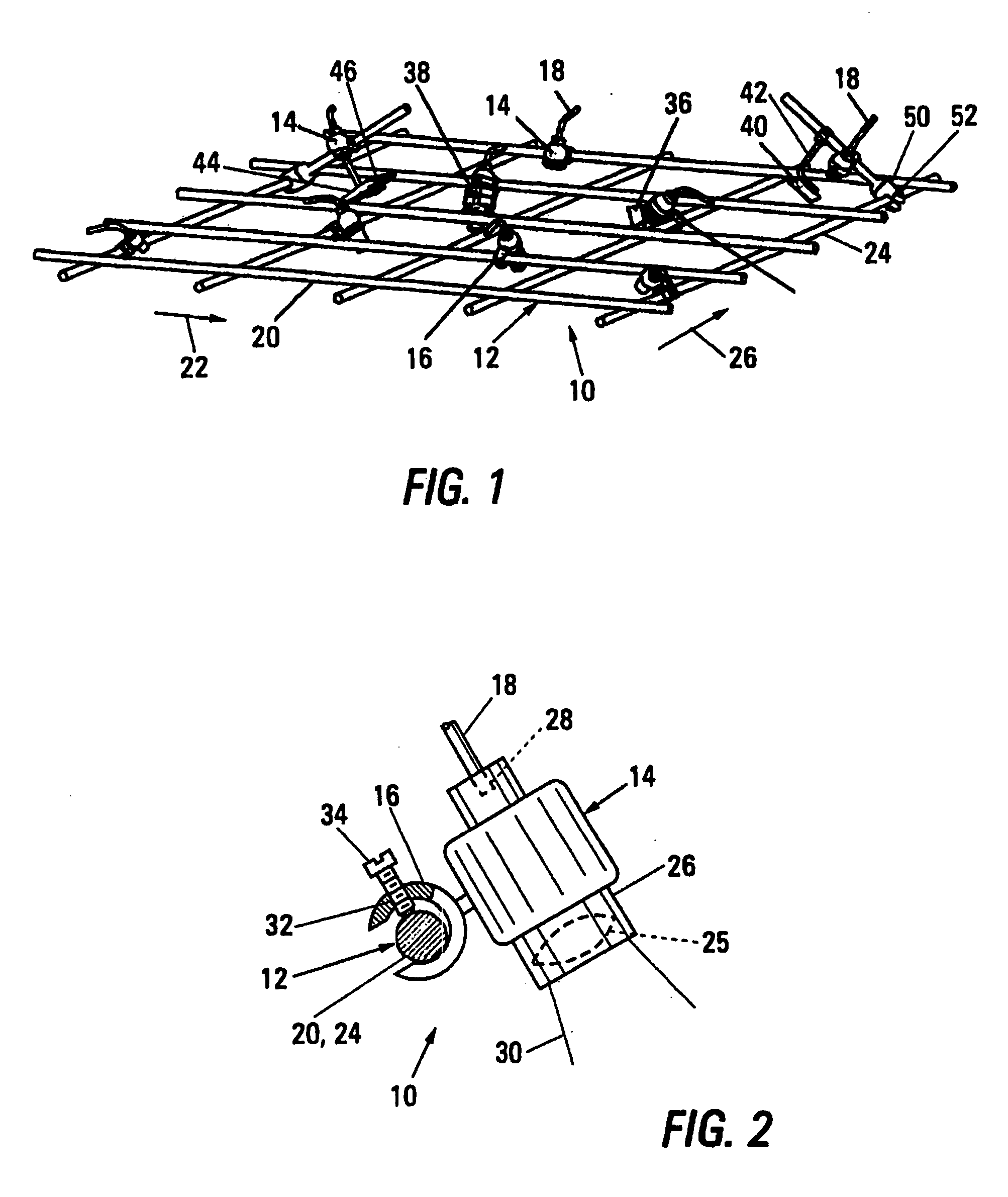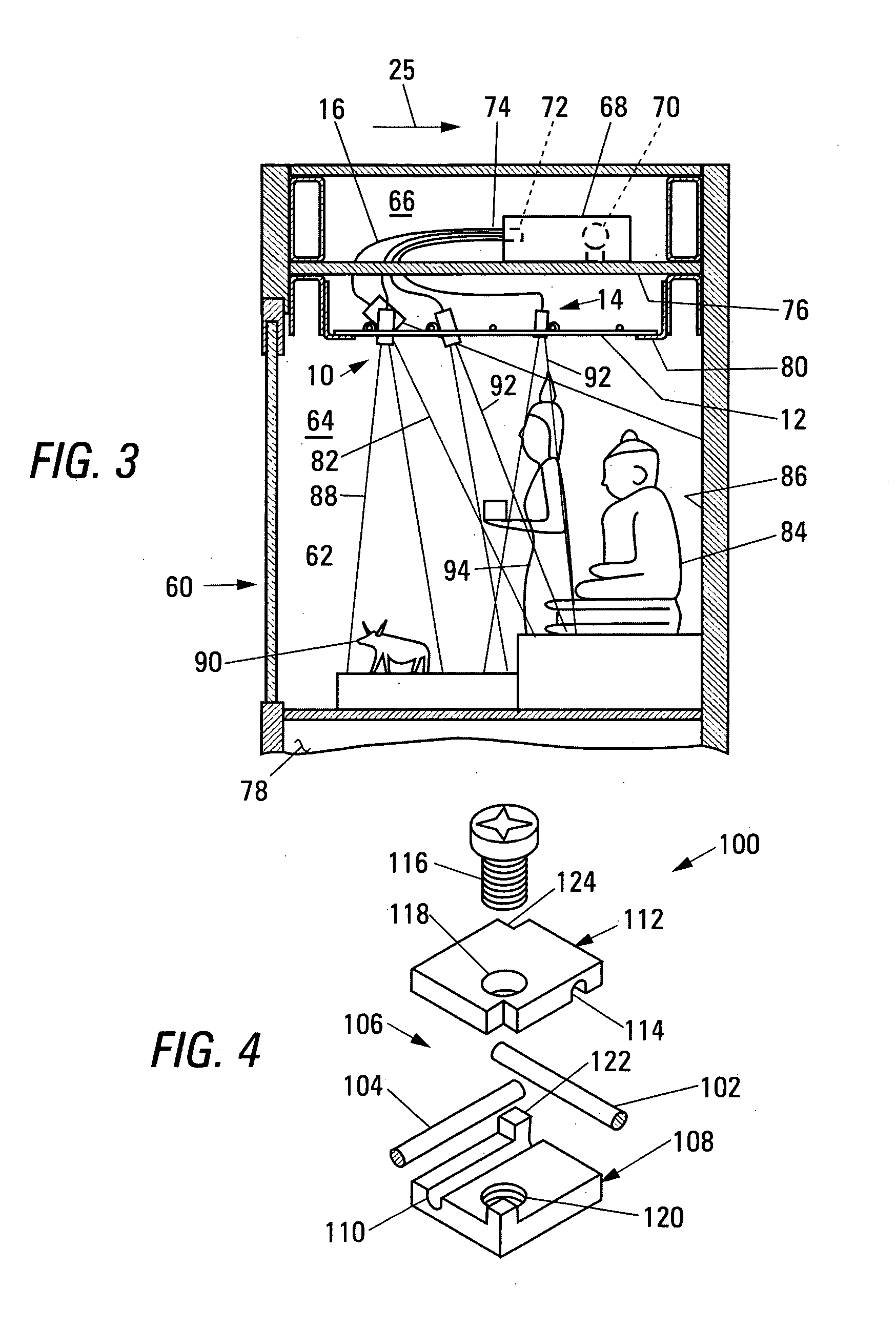Lighting apparatus for a museum display case
a technology for museum display cases and light fixtures, which is applied in the direction of lighting and heating equipment, lighting support devices, instruments, etc., can solve the problems of inability to illuminate individual objects within the display cases or enhance, and the value of public display is easily damaged, so as to minimize damage to artifacts, easy to damage, and easy to enhance
- Summary
- Abstract
- Description
- Claims
- Application Information
AI Technical Summary
Benefits of technology
Problems solved by technology
Method used
Image
Examples
Embodiment Construction
[0027]FIG. 1 is a perspective view of lighting apparatus 10 built in accordance with the present invention to include a support grid 12, to which a number of fiber optic fixtures 14 are attached by means of individual clamps 16. Each of the fixtures 14 is connected to an end of a fiber optic tail 18 through which light is provided to the fixture 14. The support grid 12 includes a number of longitudinal rods 20, extending in the longitudinal direction indicated by arrow 22, along the length of the support grid 12, and a number of transverse rods 24, extending in the transverse direction indicated by arrow 26, across the width of the support grid 12.
[0028]FIG. 2 is a partly sectional elevation of the lighting apparatus 10, showing the attachment of a fixture 14 to one of the rods 20 or 24 of the support grid 12. For example, each of the individual fixtures 14 includes one or more lenses 25 within a tubular housing 26, with the lens(es) 24 being configured to produce, from the light e...
PUM
 Login to View More
Login to View More Abstract
Description
Claims
Application Information
 Login to View More
Login to View More - R&D
- Intellectual Property
- Life Sciences
- Materials
- Tech Scout
- Unparalleled Data Quality
- Higher Quality Content
- 60% Fewer Hallucinations
Browse by: Latest US Patents, China's latest patents, Technical Efficacy Thesaurus, Application Domain, Technology Topic, Popular Technical Reports.
© 2025 PatSnap. All rights reserved.Legal|Privacy policy|Modern Slavery Act Transparency Statement|Sitemap|About US| Contact US: help@patsnap.com



